Hybrid solar systems are an increasingly popular choice for embracing renewable energy, by combining solar energy systems with a cost efficient use of the public power grid. This article explains the main components of these systems and offers some guidance in choosing the right hybrid solar system for your requirements.
Table of Contents
The market growth of hybrid solar systems
An introduction to hybrid solar systems
Components of a hybrid solar system
How to choose the right size of hybrid solar system
Final thoughts
The market growth of hybrid solar systems
The global market for solar systems is growing at a very healthy rate, largely due to a combination of increasing public electricity grid costs, and government support for renewable energy systems in the home. The residential market sees more flexibility and cost efficiencies in having a home system that makes best use of solar power as well as finding ways to minimize the need to rely on the public grid.
Because hybrid solar systems have several components, the global market is best measured through the growth of solar hybrid inverters, which are the essential ‘intelligence’ in a hybrid solar system. Looking at the period from 2023 to 2032, the global market for solar hybrid inverters is projected at a compound annual growth rate (CAGR) of 9.2%, from US$ 7.39 billion in 2023 to around US$ 16.32 billion by 2032.
The global market would expect to see even greater growth if it wasn’t for the high installation cost of the main components, particularly the cost of the inverters, and the lengthy period required to see a return on investment.
An introduction to hybrid solar systems

Hybrid solar systems combine electricity generated from solar photovoltaic (PV) panels with electricity generated from the public utility grid, storing that collected electricity in a battery storage system.
By comparison, hybrid ‘power’ systems combine electricity generated from multiple sources, which can include solar together with wind turbines, hydro-electric generators, public grid, and stand-alone fuel generators.
Whether the hybrid system is using solar only, or integrates mixed sources, the principles are the same. Energy is captured, regulated and stored as direct current (DC) in a bank of batteries, which is then made available to the home by first converting to alternating current (AC) and then used by home appliances as needed.
Power systems that only use only the public utility grid are referred to as ‘tied-grid’, or ‘grid-tied’ systems. Solar systems that are stand-alone, using only the energy from solar panels (and/or other energy sources), and are isolated from the public utility grid, are called ‘off-grid’.
Hybrid solar systems can switch between different grid modes depending on power sources available, and it is this adaptability that makes hybrid solar systems an increasingly popular choice.
In a stable grid system, where public utility power is reliable and consistent, having a hybrid system offers the household some flexibility and cost saving.
- When solar energy is plentiful, the home makes use of this energy for all of its uses, saving on utility costs.
- If the weather is overcast and solar energy is not sufficient, the home can ‘top up’ battery storage, using cheaper rate off-peak public utility electrical supply.
- If solar supply is plentiful, and batteries are full, surplus electricity generated by the home solar system can be fed back to the public grid, which can be purchased or credited by the utility company.
In an unstable grid system, where frequent power cuts or load shedding can mean power is lost for many hours in a day, then the hybrid solar system supplies the home with power from the stored batteries. When grid power is available, it is used to top up the batteries, supplementing the solar power.
Components of a hybrid solar system
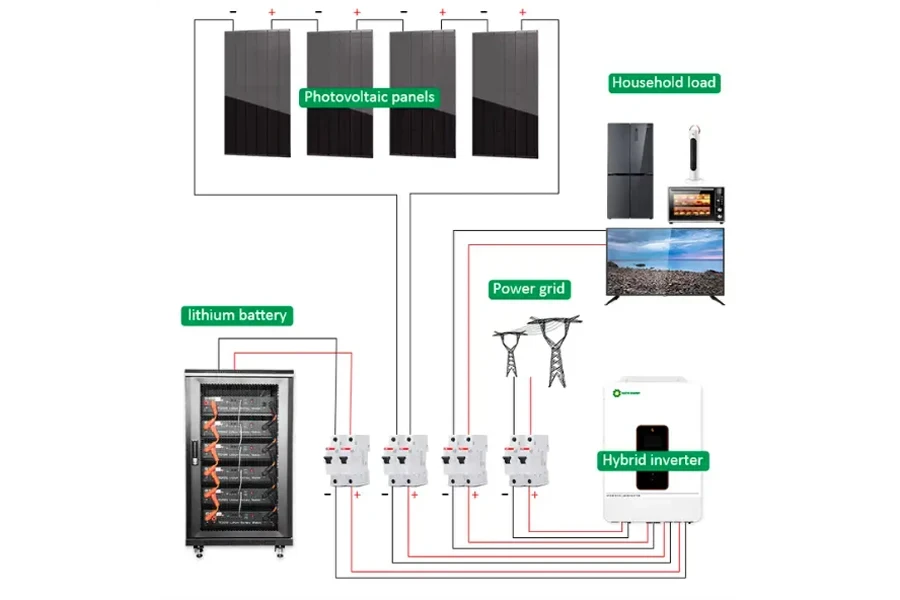
The above diagram by Xiamen Nacyc New Energy Company shows each of the important components of the hybrid solar system, the photovoltaic panels, lithium ion battery bank, and the hybrid inverter, showing how they connect to the public power grid and to the home.
Solar photovoltaic (PV) panels
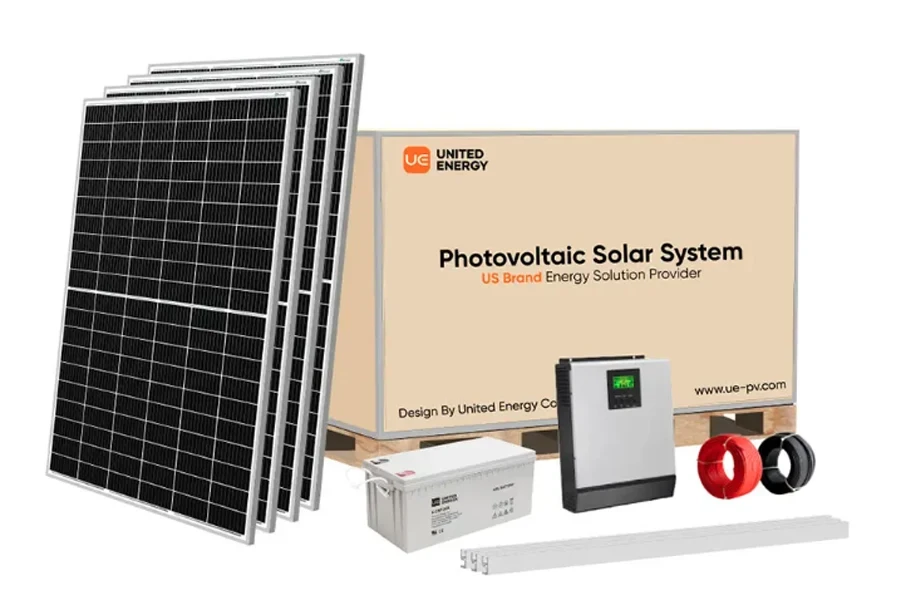
This complete system from United Energy shows a set of four solar photovoltaic cells (PV) panels as well as all other components. The actual number of panels required will depend on the capacity needed, and these are priced at US$ 0.30 to US$ 0.50 per watt.
Solar panels, solar cell panels, or solar photovoltaic panels, are the most visible components of the hybrid solar system. These panels use an array of photovoltaic cells (PV) that excite electrons, which are then passed through a circuit to generate direct current, that can be used directly to power devices, or more commonly to be stored in batteries for later use.
The solar panels are commonly installed on the roof, either at an angle over the roof tiles, or standing on a flat roof. For a flat roof, the user can angle the panels towards the strongest sunlight, whereas if fitted over the roof tiles, it is normal to select the side that sees the most sun.
The number of panels needed to be installed will depend on the user’s domestic power consumption requirements, the stability of the local grid, and also the likely amount of sunlight available.
Lithium ion battery bank

When energy is captured, either from solar panels or when fed from the grid, it is stored in an array of lithium ion batteries.In smaller systems, batteries may be standalone rather than in a battery cabinet, but will still be connected together as an array.
The amount of battery storage required will depend on the user’s domestic power consumption requirements, and to what extent the user wants to remain independent of the local grid. The more power that is stored, the more electricity available for ‘off-grid’ usage.
Hybrid inverter
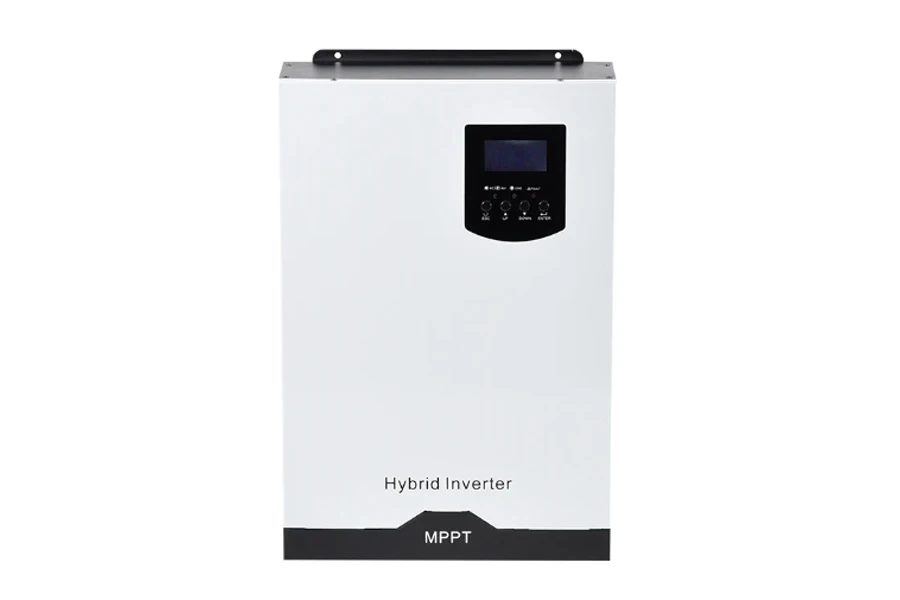
Hybrid solar inverters handle all power transfers, regulation and conversion between the batteries, home electrical network, and public utilities power grid.
Modern intelligent power management systems allow the inverter to:
- manage the solar panel charge and storage,
- monitor battery charge levels,
- switch between public grid and battery usage,
- convert stored DC current to AC,
- supply electricity to the home,
- supply surplus power back to the public grid,
- provide real time data to the cloud and to local computers.
It is important to plan for an inverter with the capacity to provide the sufficient concurrent AC conversion that the home will need. As a simple example, microwaves, kettles, ovens and heaters (or air con) can all demand around 2-5 Kw individually. All used together, this will place a very high simultaneous load on the inverter, which can trip if more power is drawn down than the inverter can convert. Intelligent systems will help you to manage excessive demand without causing the system to trip.
Other components
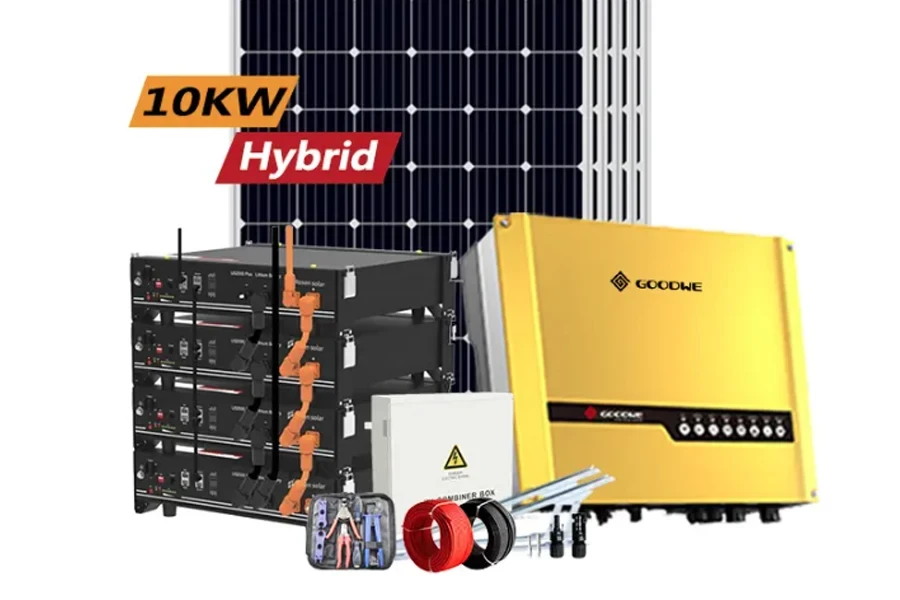
The main components included in a complete system are the solar panels, hybrid inverter, storage batteries, and monitoring software. They also may include fittings, cabling and in some cases a complete tool kit.
How to choose the right size of hybrid solar system
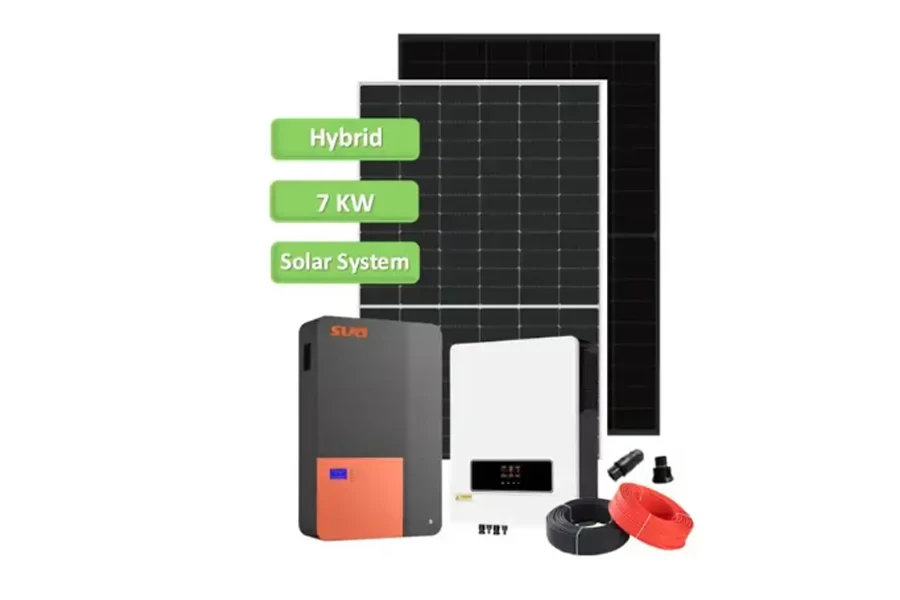
When selecting the right size of system for the desired use, the supplier should be able to help with calculations. A spreadsheet can help and the supplier may have one to give you.
Key factors to plan will be based on the expected daily and concurrent usage, in KiloWatts. This can be determined from monthly utility bills, to estimate monthly KiloWatt usage, and then this needs to be divided down to a daily amount. This is unlikely to give detailed hours drawdown, but it is helpful to think about peak usage timings rather than average. For example, mealtime cooking can involve using high wattage equipment, oven, microwave, other kitchen appliances, while also using energy for home heating, water heating, tv and home internet.
If the intention is to build surplus supply to feed back to the public grid, then the estimate must allow for that surplus. Of course all of these estimates must ultimately lead to a system that fits within budget, as well as the likely amount of consistent sunlight available. Compromises may well be necessary to find the right size of system.
It is important to note that hybrid solar systems require a large upfront cost, in buying all of the equipment, installation and connection. Return on investment is likely to be over several years, rather than months, so expectations must be managed in building a system on a pure cost savings basis.
Final thoughts
Hybrid solar systems make best use of the combination of renewable solar energy and selective use of public utility grid. The main system component that makes smart combination possible is the intelligent hybrid inverter, with power management systems that give control to the home user.
There is a wide choice of hybrid systems available, all of which include the main components of solar PV panels, storage battery arrays, and a modern hybrid inverter, with smart software. The challenge for the user is to decide what capacity is desired, what use of the public grid is preferred (or necessary in an unstable grid environment), and then what size of system is needed to handle that. Capacity is determined by how many panels are required to capture sufficient sun, how many storage batteries are required to hold enough power for all uses, and what DC/AC conversion capacity the inverter can handle for any concurrent demand.
Cost is an important factor as most of the cost is upfront investment, in buying and installing the components, and ROI is likely to be over a long period. However, where there is an unstable power grid, a high investment cost may be more acceptable for the necessity of regular power. Suppliers may price by complete set, but many price by US$ per watt, so again it is important to know the necessary capacity.
Potential buyers will want to compare the choices available. More information on the wide selection of hybrid solar systems available, and their individual components, can be found at the online showroom at Chovm.com.
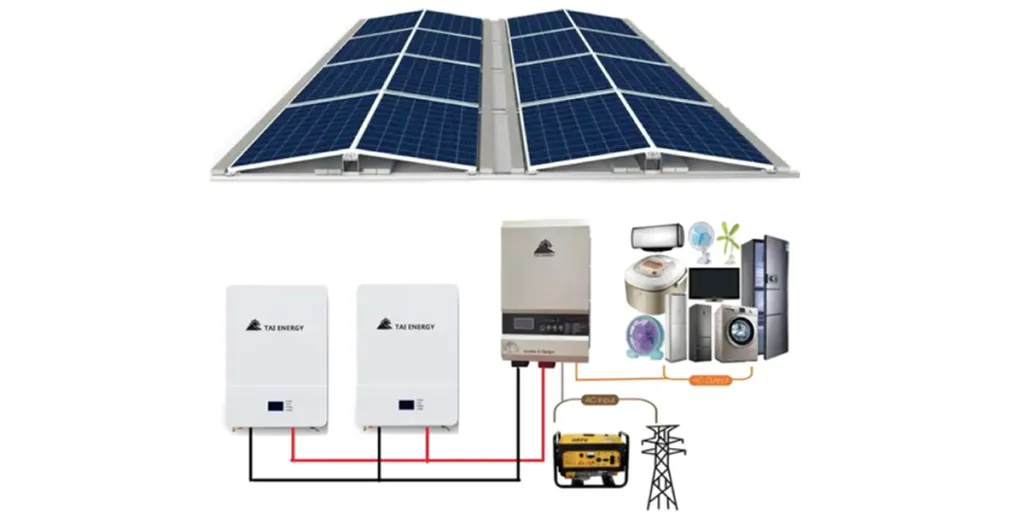




 বাংলা
বাংলা Nederlands
Nederlands English
English Français
Français Deutsch
Deutsch हिन्दी
हिन्दी Bahasa Indonesia
Bahasa Indonesia Italiano
Italiano 日本語
日本語 한국어
한국어 Bahasa Melayu
Bahasa Melayu മലയാളം
മലയാളം پښتو
پښتو فارسی
فارسی Polski
Polski Português
Português Русский
Русский Español
Español Kiswahili
Kiswahili ไทย
ไทย Türkçe
Türkçe اردو
اردو Tiếng Việt
Tiếng Việt isiXhosa
isiXhosa Zulu
Zulu